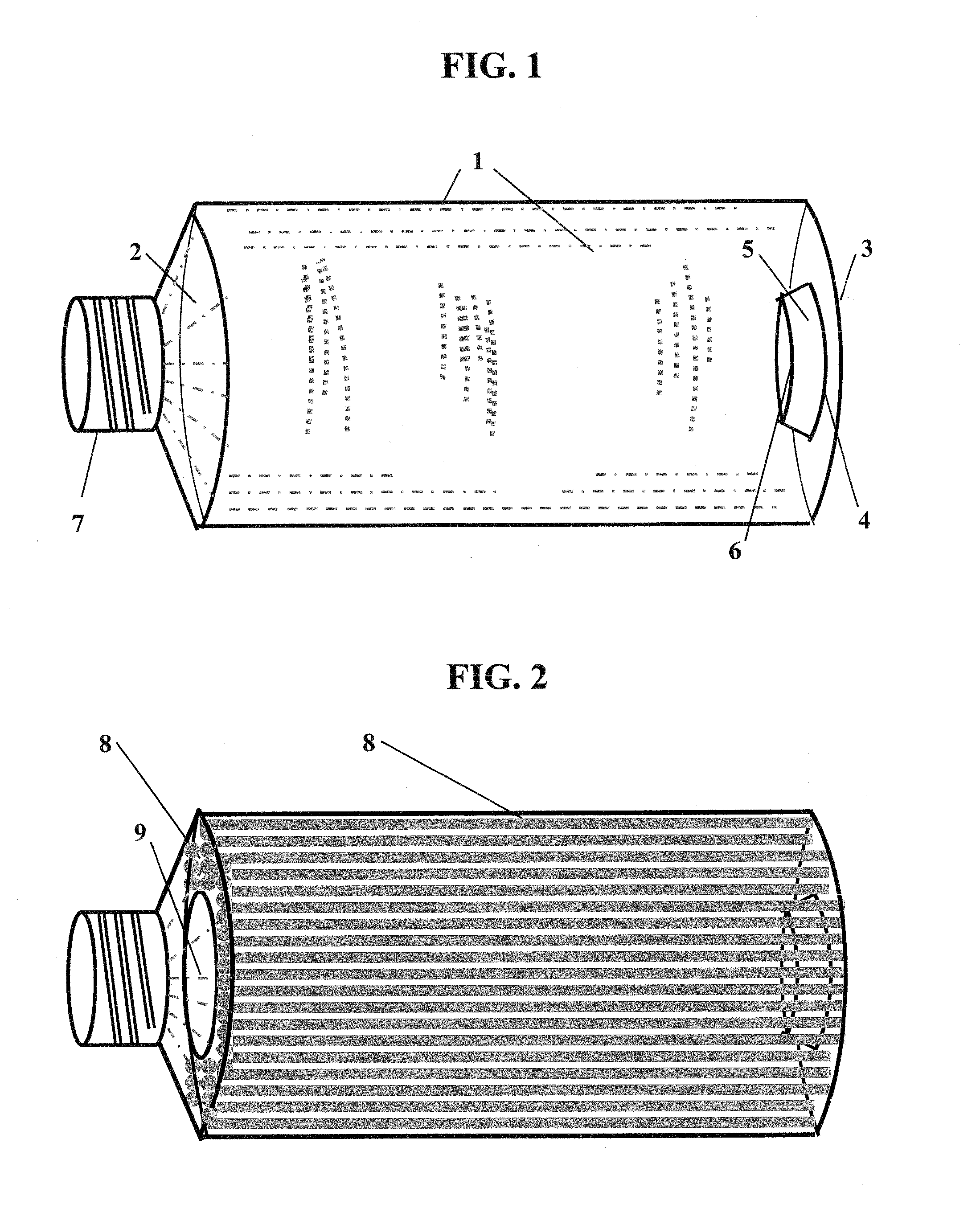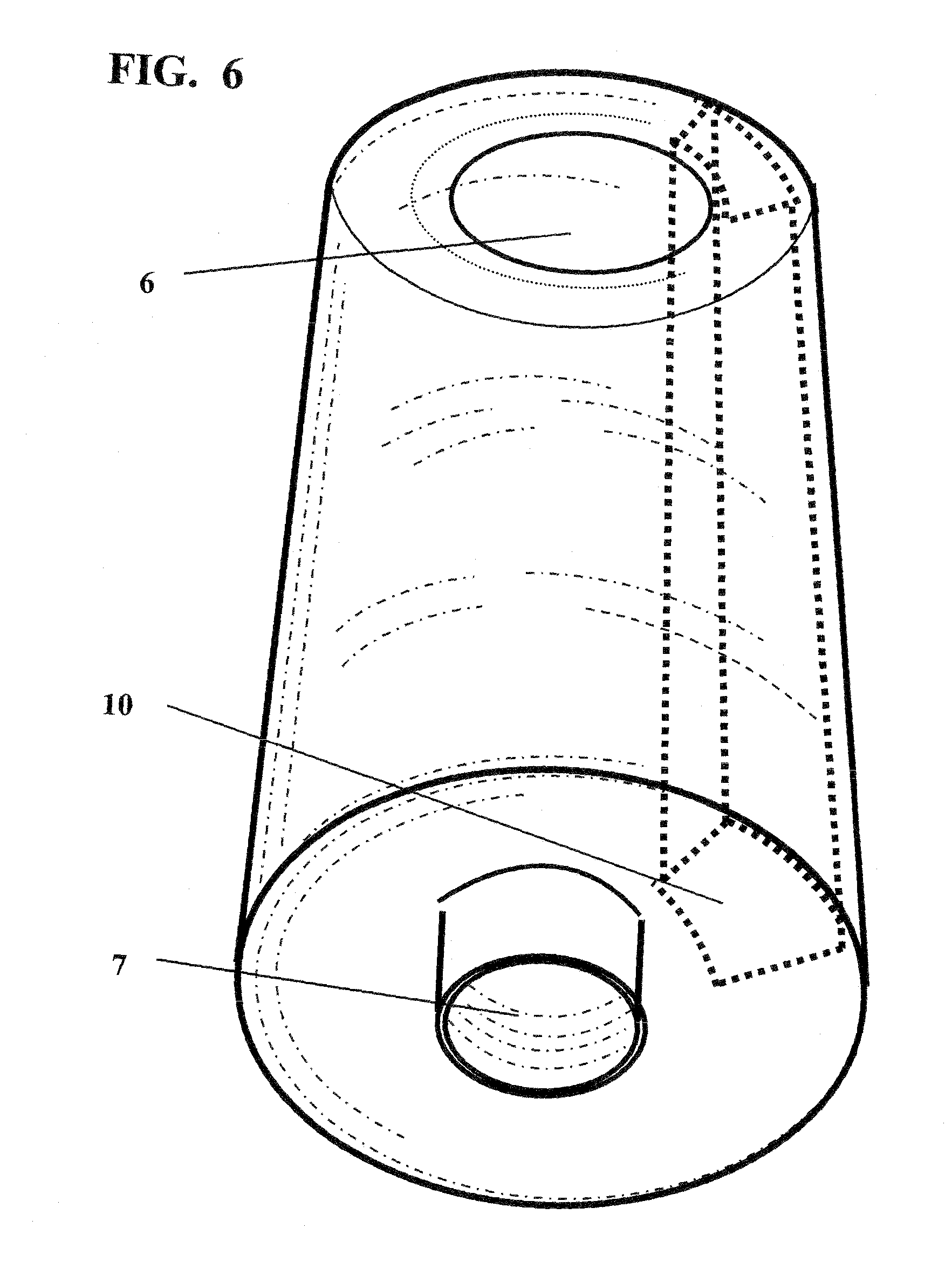Bioreactor with rods arrayed for culturing anchorage-dependent cells
a technology of anchorage-dependent cells and bioreactors, which is applied in the field of bioreactors with rod arrays for anchorage-dependent cells, can solve the problems of complex and costly construction and manufacture of self-contained multi-tiered flasks, and the inability to meet the needs of all cell types, and achieves convenient use configuration, simple design, and easy manufacturing
- Summary
- Abstract
- Description
- Claims
- Application Information
AI Technical Summary
Benefits of technology
Problems solved by technology
Method used
Image
Examples
Embodiment Construction
[0051]An exemplary embodiment of the invention is set forth in FIG. 1. With reference to FIG. 1 a conventional plastic roller bottle with approximate dimensions as follows: wall (1), length 233 mm from the base (3) to the lowest portion of the top (2), chamber inner diameter 113 mm, threaded opening (7) with an internal diameter of 42 mm that accommodates a screw-on cap is packed with an array of parallel rods (FIG. 2). The rods are composed of tissue culture appropriate material (e.g., treated plastic) to promote cell adhesion and growth. In this example, the dimensions of each rod (FIG. 4) are approximately 232 mm in total length and 3 mm in diameter along the length of the shaft. The rods may have a smooth or corrugated surface. For one mode of assembly and spacing, the rods have knobs (11) at both ends approximately 4 mm in diameter (FIG. 5).
[0052]The rods run parallel to the wall of the roller bottle and are annularly arranged along the wall stacked approximately 27 mm in heigh...
PUM
 Login to View More
Login to View More Abstract
Description
Claims
Application Information
 Login to View More
Login to View More - R&D
- Intellectual Property
- Life Sciences
- Materials
- Tech Scout
- Unparalleled Data Quality
- Higher Quality Content
- 60% Fewer Hallucinations
Browse by: Latest US Patents, China's latest patents, Technical Efficacy Thesaurus, Application Domain, Technology Topic, Popular Technical Reports.
© 2025 PatSnap. All rights reserved.Legal|Privacy policy|Modern Slavery Act Transparency Statement|Sitemap|About US| Contact US: help@patsnap.com



